The Poco Field
The Poco Field: An American Story of Place - Guide for Reading Groups
 The Poco Field: An
American Story of Place is the story of my grandparents, C. T. Apperson and Aldah Williams
Apperson, and their efforts to enter the American middle class as they saw it
in the Pocahontas coalfields of southern West
Virginia from the 1920s through the late 1940s.
The Poco Field: An
American Story of Place is the story of my grandparents, C. T. Apperson and Aldah Williams
Apperson, and their efforts to enter the American middle class as they saw it
in the Pocahontas coalfields of southern West
Virginia from the 1920s through the late 1940s.
The Poco Field utilizes the extensive archive of letters, articles, clippings, legal documents, recipes, stories, photographs, and other material my grandmother and her mother and grandmother collected. Based in large measure on this primary source material, this story focuses on two places that were deeply interwoven in my grandparents’ lives and consciousness—the town of Keystone in McDowell County, West Virginia, and the village of Newbern in Pulaski County, Virginia.
At the same time as telling my grandparents’ story, I have also undertaken to write the biography of Keystone and of Newbern, and to do so by utilizing what the geographer David Harvey and the writer Raymond Williams have described as “militant particularity.” Place becomes in The Poco Field not just Keystone and Newbern, but also a living, dynamic concept with creative potential. This dual perspective of place renders as crystalline the assumptionsand values on which my grandparents built their lives, the choices they made, the sacrifices their choices required, and the costs they paid for their choices. I also write of the choices they could not make because they could not envision such choices as possibilities in those places. By telling my grandparents’ story and interweaving with it the story of these places, I have aspired to write an honest and discerning representation of middle class life, its contradictions, and its inconsistencies, its social and cultural costs, and its damages. By telling my grandmother’s story and the choices she made after my grandfather’s death, I suggest how our places can inform a new kind of citizenship, a new range of choices my grandfather could not have envisioned.
The Poco Field is shaped in a particular approach to the art and craft of writing. Believing that a good story well told is the best teacher, I have soughtto make the book accessible to a range of readers, from within and from outside the academy, but to do so without sacrificing the story, its substance, or integrity. A great many persons who have never had access to the academy are part of this work; it is the story of a man who never had opportunity to graduate from high school, and a woman who did not have much more education. I wanted to write this book in such a way that all of these persons could see their own stories and understand them as part of larger stories and questions, seeing new meanings and new importance in their choices and journeys.
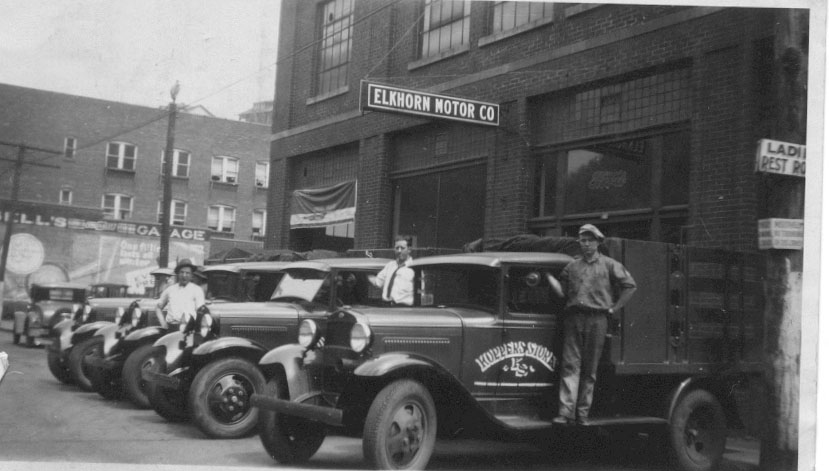
Koppers Delivery Trucks - Keystone, West Virginia circa 1930
I have worked to use the core concepts and insights of cultural studies without resorting to the use of jargon. I want the stories of people and places to illustrate and embody the substance of the ideas and concepts, showing them as living and applicable--theory as lived experience. I did not want the use of a highly specialized language to discourage or exclude readers who were not familiar with that language. For instance, I use my grandparents’ Keystone neighborhood of Westfield as a metaphorical way of talking about the American Dream with its convergence of American middle class aspirations, and the values, assumptions, and power of American consumer culture and the costs that convergence has exacted both from people, like my grandparents, and from places themselves.
The Poco Field defies easy categorization. As one reviewer has written, “More than a memoir…and more than a social history, more than a community study, the book is ultimately a meditation on the tensions between place commitments…and middle class aspirations for success and mobility, economic security, prestige, and consumerism.” The Poco Field as been described as an extended reflection on the “Zen” of place and the creative force it can have in our lives. The Poco Field compassionately “exposes a tragedy akin to that of Willy Lowman in Arthur Miller’s Death of a Salesman.” One reader from outside the academy has written that The Poco Field tells the story of an “American everyman.” I have done so to hold out an alternative vision of other choices and other journeys than Lowman’s tragedy.
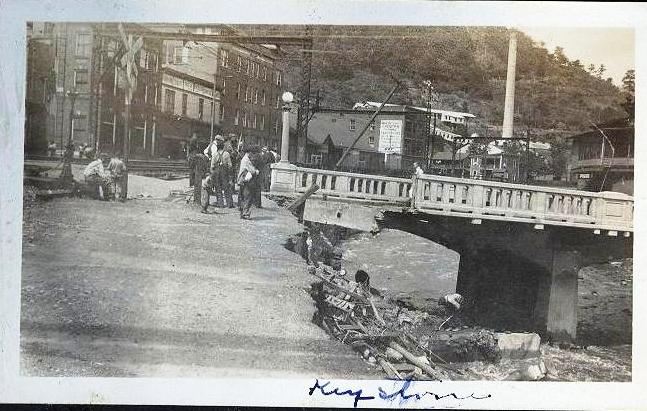
Elkhorn Creek Flood Damage - Keystone, West Virginia
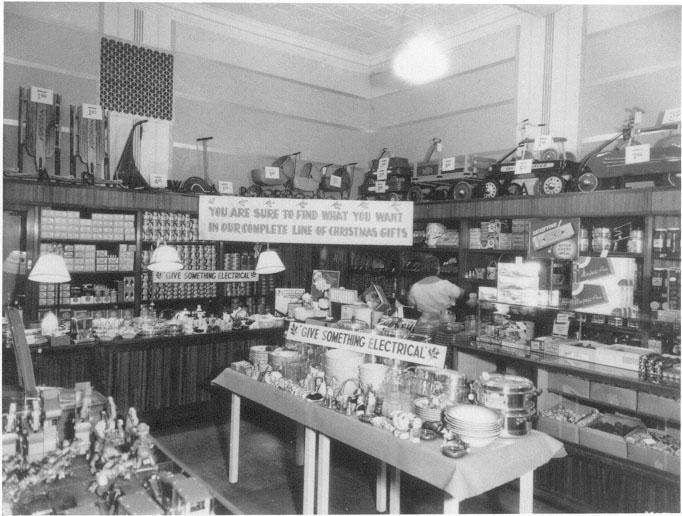
Koppers Number Ten - Christmas 1935
Though rich with details and image, the story I have written is also lean. I want readers to come to know these people and their lives, and their places in their deep complexity, with all of their unanswered, unresolved question and struggles. Adhering to Kenneth Burke’s precept that the role of stories, of literature, is to provide us with “the equipment for living,” I endeavored to create the space for readers to think creatively and honestly about their own stories and citizenship, their own places, and to make their own connections and draw conclusions. My ambition is for this story of people and place to provide the opportunities for readers to grapple with the deep interconnection between people and places and the analogous forces, issues, and questions at work in every place. I want readers to realize the creative potential and possibilities for an education and a citizenship of place.
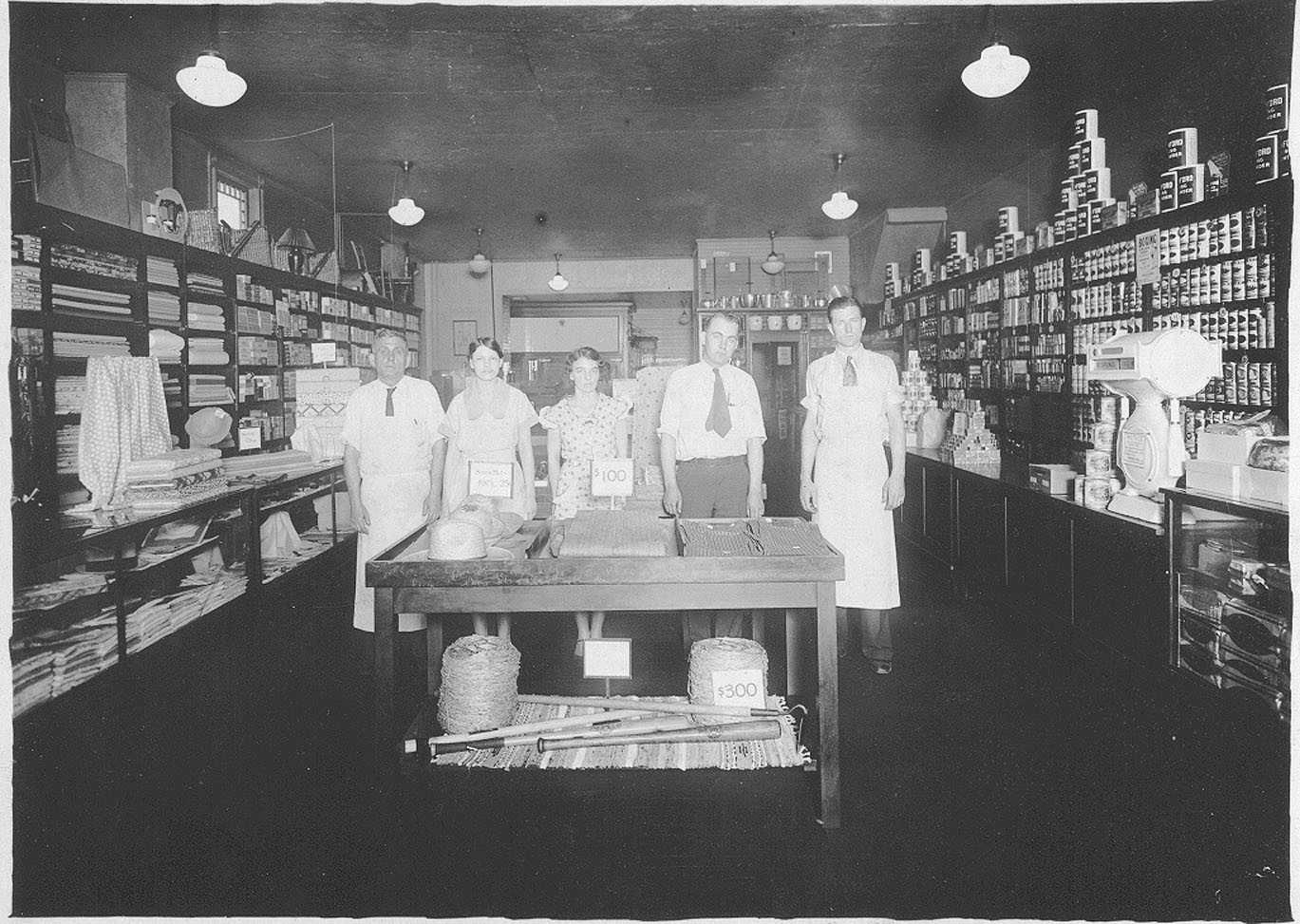
"The Force," Number Ten - Summer 1930
(C. T. Apperson, second from right; Aldah Williams, center)
The Poco Field can be purchased from the
University of Illinois Press and is also available from local bookstores and online dealers.
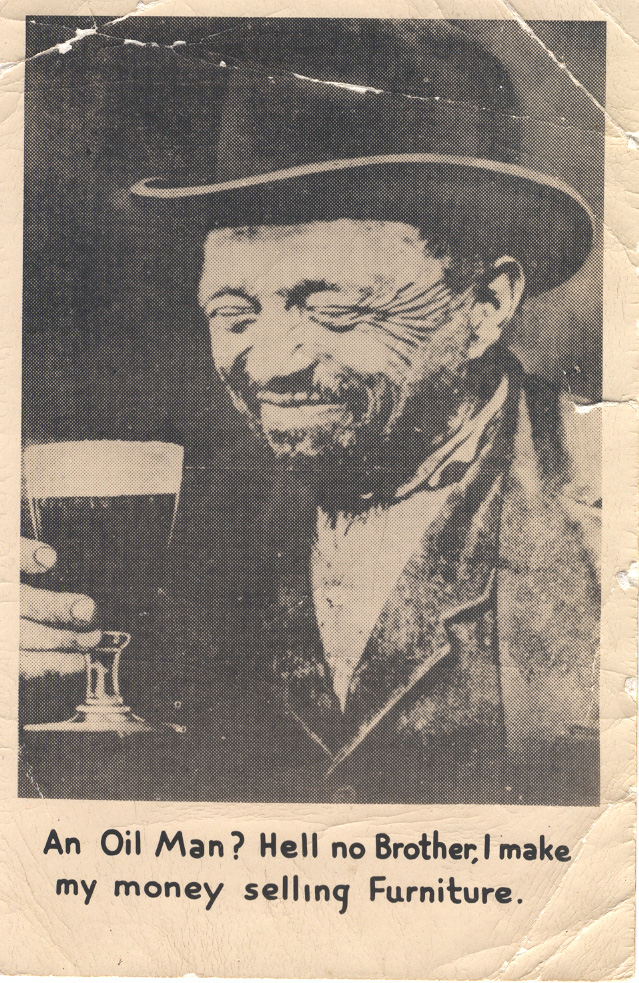
A salesman's sense of humor, from C.T. Apperson's wallet, 1952
Copyright (c) 2011 Talmage A. Stanley. All rights reserved.
tal@talmagestanley.com